The Transmission Control Unit (TCU) for a modern automatic transmission vehicle determines when your car’s engine needs to shift gears. This determination is calculated according to multiple inputs from: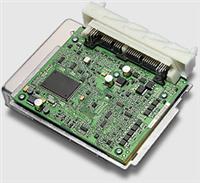
- Increased Fuel Efficiency
- Reduced Emissions
- Improved Shifting Reliability
- Improved Vehicle Handling
- Improved Shift Feel
- Increased Shift Speed
Some vehicles combine the TCU with the Engine Control Unit (ECU) into the Powertrain Control Module (PCM). Everett Transmission Repair specialists can diagnose and repair your vehicle’s transmission problems. The multiple inputs to the TCU include (but no necessarily limited to):
Vehicle Speed Sensor (VSS)
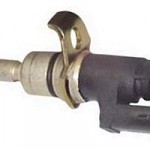 Also referred to as the Output Speed Sensor (OSS), the VSS sends a signal that indicates the vehicle’s speed. This variable frequency signal is used by the TCU to determine when the gear should be changed. The VSS is one of the primary inputs for the TCU.
Also referred to as the Output Speed Sensor (OSS), the VSS sends a signal that indicates the vehicle’s speed. This variable frequency signal is used by the TCU to determine when the gear should be changed. The VSS is one of the primary inputs for the TCU.
Wheel Speed Sensor (WSS)
The WSS signals the true speed to the TCU. The WSS senses whether the car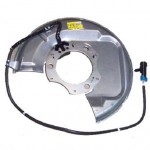 is traveling uphill or downhill, and can adapt gear changes to road speeds. Fuel consumption is decreased using the WSS input to de-couple the torque convertor when the car is sitting still. Torque convertor de-coupling also reduces the load on the running gear.
is traveling uphill or downhill, and can adapt gear changes to road speeds. Fuel consumption is decreased using the WSS input to de-couple the torque convertor when the car is sitting still. Torque convertor de-coupling also reduces the load on the running gear.
Throttle Position Sensor (TPS)
One of the main signals (in addition to the VSS input), this input is shared with 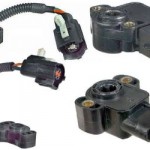 the ECU. The TPS indicates engine load to the TCU. This input is used to determine the best time for a gear shift and the characteristics of that shift. Continually monitored throughout a trip, the inputs from the TPS help with program changes to be certain your vehicle is at optimum performance. Additionally, the TPS is compared to the VSS to determine acceleration patterns, etc. The ratio of TPS to VSS is compared to the vehicle’s nominal ratio, and gears are shifted accordingly; if the ratio is much higher or lower, the shift patterns are altered accordingly. For example, when placing extreme load on your vehicle’s engine going uphill or towing a trailer requires different shifting behavior than driving on a flat road.
the ECU. The TPS indicates engine load to the TCU. This input is used to determine the best time for a gear shift and the characteristics of that shift. Continually monitored throughout a trip, the inputs from the TPS help with program changes to be certain your vehicle is at optimum performance. Additionally, the TPS is compared to the VSS to determine acceleration patterns, etc. The ratio of TPS to VSS is compared to the vehicle’s nominal ratio, and gears are shifted accordingly; if the ratio is much higher or lower, the shift patterns are altered accordingly. For example, when placing extreme load on your vehicle’s engine going uphill or towing a trailer requires different shifting behavior than driving on a flat road.
Turbine Speed Sensor (TSS)
Also referred to as the Input Speed Sensor (ISS), the TSS sends a signal indicating the rotational speed of the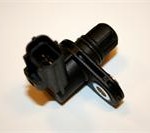 torque convertor (input shaft). This information is used by the TCU to regulate the torque convertor’s lock-up clutch. The TSS allows the TCU to monitor slippage across the torque convertor; some TCUs also monitor slippage across the bands and clutches as well.
torque convertor (input shaft). This information is used by the TCU to regulate the torque convertor’s lock-up clutch. The TSS allows the TCU to monitor slippage across the torque convertor; some TCUs also monitor slippage across the bands and clutches as well.
Transmission [Fluid] Temperature Sensor (TFT)
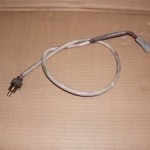 Also referred to as the Transmission Oil Temperature, this sensor gauges the temperature of the ATF inside the transmission. This input is used as a failsafe measure to downshift when the ATF temperature is extremely high. Some TCUs are able to alter the line and solenoid pressure according to viscosity as calculated by the ATF temperature. Additionally, the TFT can be used to regulate the torque convertor lock-up clutch.
Also referred to as the Transmission Oil Temperature, this sensor gauges the temperature of the ATF inside the transmission. This input is used as a failsafe measure to downshift when the ATF temperature is extremely high. Some TCUs are able to alter the line and solenoid pressure according to viscosity as calculated by the ATF temperature. Additionally, the TFT can be used to regulate the torque convertor lock-up clutch.
Kick Down Switch
This input can determine if the accelerator (gas) pedal is pushed past full throttle. If activated, the kick down switch activates a downshift of the transmission. The transmission will shift into the lowest possible gear according to road speed, allowing the vehicle to use reserve engine power. Although the kick down switch is still present on many modern transmissions, the TCU responds to the TSS to determine necessary downshifting for power.
Brake Light Switch
Used to prevent shifting when the driver’s foot is not on the brake. Also, this input determines if the engine’s braking effect must be increased by downshifting when braking while driving downhill.
Traction Control System (TCS)
If the TCS signals unfavorable road conditions to the TCU, the shifting program is changed accordingly. Most vehicles’ TCUs do have a TCS input, and will alter shifting patterns by shifting up early, eliminating the lock-up clutch on the torque convertor and eliminating first gear (starting from second).
Miscellaneous Switches
Simple on/off switches throughout the engine send signals to indicate the presence (or lack of ) hydraulic pressure in specific lines. Mostly for diagnostic purposes, some hydraulic switch inputs are use to control hydraulic elements.
Cruise Control Module
Eliminates unexpected gear shifts when TCU receives the cruise control engaged signal.


Great service and great mechanics